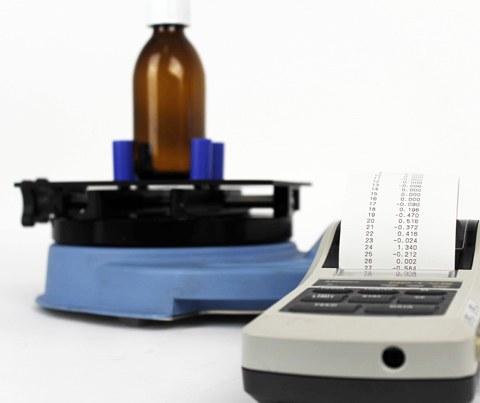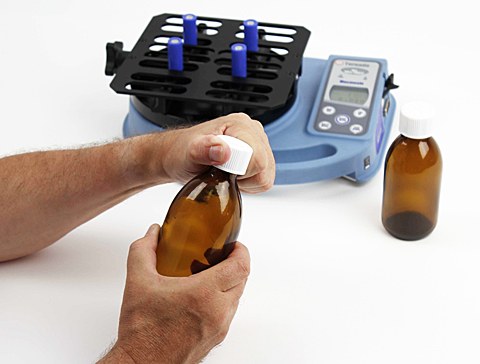Error message
Warning: file_get_contents(http://ipinfo.io/3.133.159.240/country): failed to open stream: HTTP request failed! HTTP/1.0 429 Too Many Requests in include_once() (line 656 of /home/closuretesting/public_html/sites/default/settings.php).ASTM D3810-97 (2002) Minimum application torque of type 1A child-resistant closures
Measuring the minimum application torque on type 1A child-resistant closures
NOTE: Withdrawn standard, no replacement (2016)
This overview is intended to provide a basic understanding of the test procedure and suitable equipment to meet the standard. Please refer to the latest official ASTM test method D3810-97 (2002) standard for more detailed information.
Type 1A child-resistant closures are reclosable continuous thread closures requiring a random push-down force while turning to remove from the container. No orientation of the push-down force is necessary. The removal torque is then measured after fixed intervals, so that any degradation in the removal torque level can be ascertained.
Type 1A child-resistant closures are reclosable continuous thread closures requiring a random push-down force while turning to remove from the container. No orientation of the push-down force is necessary. Pre-conditioned representative samples of type 1A child-resistant closures are applied to appropriate containers, the application torque level being determined according to ASTM D 3198. The removal torque is then measured after fixed intervals, so that any degradation in the removal torque level can be ascertained. This fully degraded removal torque can then be compared to the reverse-ratchet torque determined according to ASTM D 3472.
A calibrated torque meter capable of indicating clockwise and counter-clockwise torque. The meter should have a means of securely holding the container without distortion.
Separate, unused containers and closures are sampled in accordance with established statistical sampling procedures. Sufficient quantities of containers and closures should be provisioned to provide for at least five specimens at each of a minimum of three application torque levels for each time interval. If required, they may be conditioned in a controlled temperature and humidity environment as detailed in this ASTM standard.
- Pre-condition the closures and containers in a controlled environment as recommended in the standard.
- Select a minimum of three application torque levels for testing.
- Fit the closures into the holding device of the torque meter.
- Apply the closures to the containers to the selected application torque level by observing the torque meter. To aid repeatability it is recommended that this should be performed by the same operator. (Alternatively a motorised torque measuring system can fulfil this role with greatly increased repeatability and reduced risk of repetitive strain injury to the operator).
- After the recommended storage interval (e.g. immediate, 1 day, 1 week, 2 weeks, 3 weeks or 4 weeks), the closed containers are put into the torque meter holding device and the closures removed, observing the removal torque as indicated on the torque meter. The recommendation to aid repeatability is to use the same operator who applied the closures for their removal. (As previously noted, a motorised torque measurement system can be employed to greatly reduce the operator bias).
Contact Mecmesin

Got a question about this product?
Our technical sales engineers can help find the right solution for your testing requirements and provide online equipment demos with your samples.

